Annual and Sustainability Report
Brim’s Operations in 2021
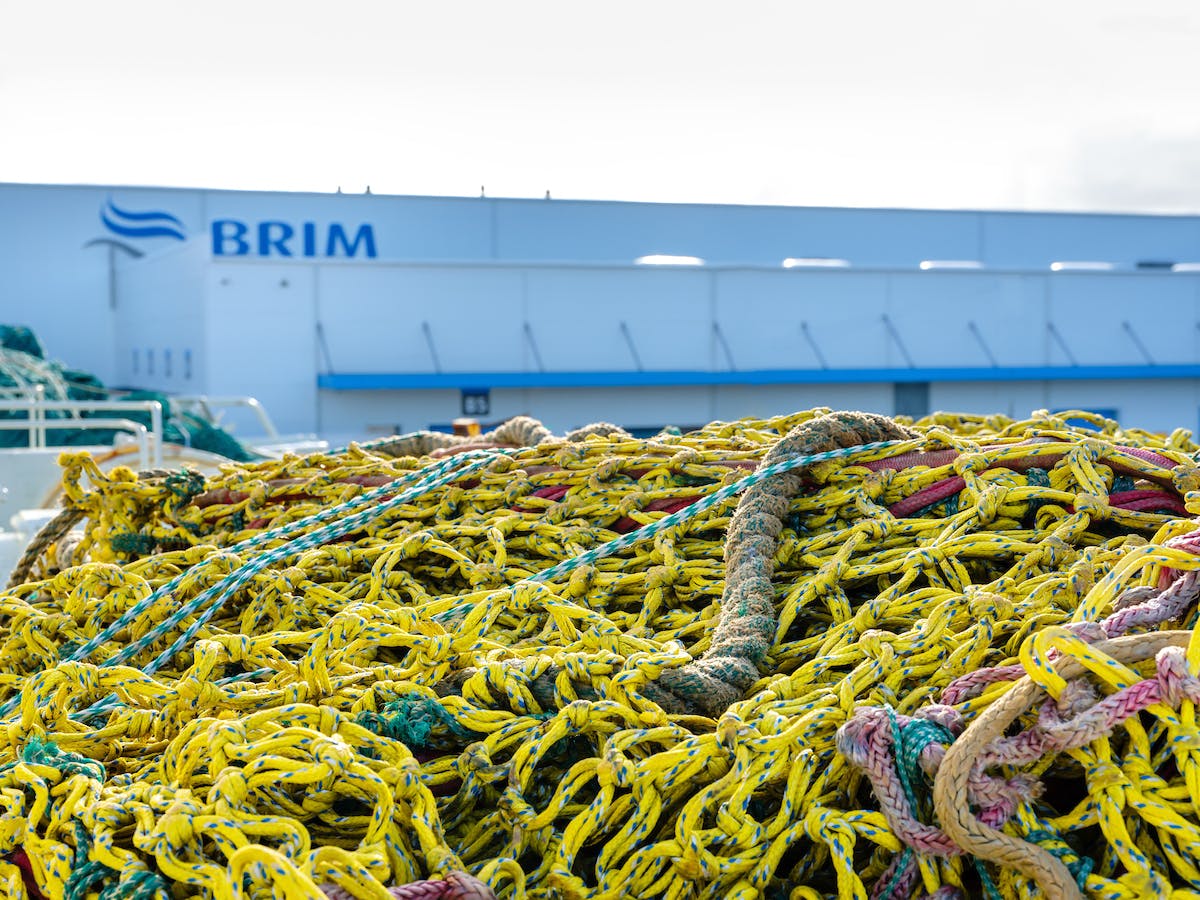
2021 at a Glance
Brim is the largest fisheries company in Iceland with catch quotas, which correspond to close to 12% in cod equivalents. Brim and its subsidiaries have operation units in Reykjavík, Akranes, Vopnafjörður and Hafnarfjörður. An average of nine fishing vessels were in operation during the year. The company’s head offices are at Norðurgarður in Reykjavík. These house the executive management of the company along with the finances, groundfish, pelagic and human resources departments. The number of full-time positions at Brim and its subsidiaries were 762 in 2021 and are spread out over the entire value chain, i.e. fishing, processing, sales and distribution of the company’s products. The company is listed in the main market of the Icelandic NASDAQ exchange.
The COVID-19 pandemic had a considerable effect on the Group’s operations during the year. Efforts were made to ensure the safety of employees, and with a concerted effort by staff, significant disruption to operations was prevented.
Highlights in 2021
- Brim issued green and blue bonds during the year. The bonds are the first of their kind to be issued in Iceland. By issuing the bonds, Brim finances projects that promote sustainability and have a positive impact on the environment, with blue bonds regarding projects related to the sea and water.
- The freezer trawler Höfrungur III was sold to Russia.
- Brim acquired the pelagic vessel Svanurinn RE 45, formerly named Iivid, and the goal is to further strengthen the pelagic section of the operations.
- At the end of the year, Brim purchased a 43% share in Melnes ehf.
- The capelin season was abundant after two capelin-free years, and herring fishing was at its best.
- The first full year of operation of Brim’s high-tech processing plant in Norðurgarður went well, productivity was good, the working environment was improved and accidents were reduced.
- In respect of sales of catch quotas in capelin due to the law on maximum catch value of calculated total cod-equivalent tonnes, Brim exceeded the 12% maximum due to an unusual allocation of capelin and the cod-equivalent coefficient of capelin went from 0.00 to 0.36.
Board of Directors and Corporate Governance
Brim’s Board of Directors consists of five people who are elected at the company’s Annual General Meeting each year.
In 2021, Guðmundur Kristjánsson resigned from the Board when he took over the position of Managing Director of Brim, and at Brim’s Annual General Meeting in March, Hjálmar Kristjánsson was elected to the company’s Board.
Brim’s Board of Directors from the 2021 AGM:
- Kristján Þ. Davíðsson, Chairman
- Anna G. Sverrisdóttir, Vice-Chairman
- Hjálmar Kristjánsson
- Kristrún Heimisdóttir
- Magnús Gústafsson
Further information about the Board of Directors can be found on the company’s website, which also includes the company’s articles of association, rules of procedure, governance statement, remuneration policy and other company policies.
Board and Governance
Executive Board
Brims executive board in 2021, was made up of the following members:
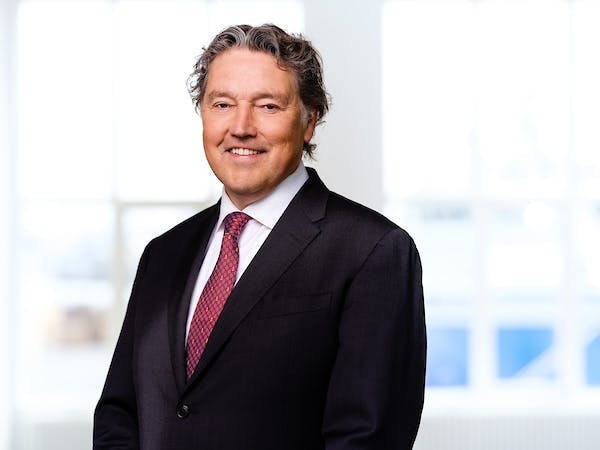
Guðmundur Kristjánsson
Chief Executive Officer, CEO

Inga Jóna Friðgeirsdóttir
Chief Financial Officer, CFO
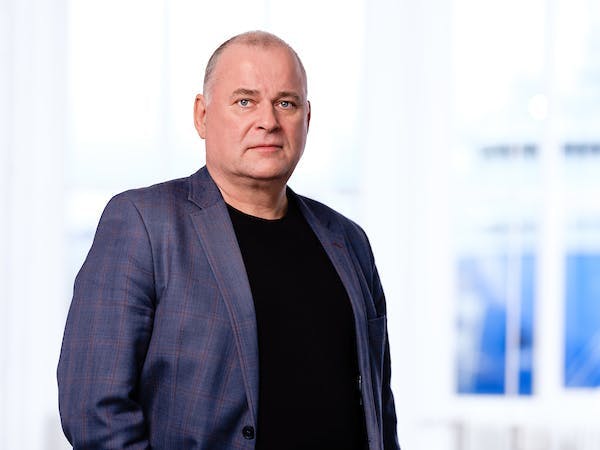
Ægir Páll Friðbertsson
Chief Operation Officer, COO

Gréta María Grétarsdóttir
Board and Governance
Shareholders
Registered share capital of Brim hf. was ISK 1,956 million at the end of 2021. At the end of the year, the company owned its own shares with a nominal value of ISK 35 million. Outstanding share capital amounted to ISK 1,921 million. The number of shareholders at the beginning of the year was 880 but was 1,246 at year-end. At the end of 2021, four shareholders owned more than 10% of the company: Útgerðarfélag Reykjavíkur hf., which owned 34.53%; Lífeyrissjóður starfsmanna ríkisins A-division, which owned 14.20%; Lífeyrissjóður verslunarmanna, which owned 10.76%; and RE-13 ehf., which owned 10.23%.
The share price was 78.0 at the end of 2021 and 50.1 at the beginning of the year. The actual return on shares during the year, including dividends in the company, turned out to be positive by 50.9%. This is based on shares bought at the closing price of the year 2020 and sold at the end of the year 2021, taking into account the payment of dividends and inflation during the year. In the long run, the actual return on a share which was bought at the end of 2001 and sold at the end of last year averaged 12.1% per year.
Registered trading in Brim hf. shares amounted to ISK 17,939 million in 2021. Registered trading in 2020 amounted to ISK 9,423 million. The nominal increase in the OMX Iceland ICEX-IS index was 32.96% in 2021 and 34.55% taking into account dividends.
| Owner | Shares | % |
|---|---|---|
Útgerðarfélag Reykjavíkur hf. | 663.370.977 | 34,53% |
Lífeyrissjóður starfsmanna ríkisins A-deild | 272.800.000 | 14,20% |
Lífeyrssjóður verslunarmanna | 206.680.503 | 10,76% |
RE-13 ehf. | 196.500.000 | 10,23% |
KG Fiskverkun ehf. | 78.024.576 | 4,06% |
Lífeyrissjóður starfsmanna ríkisins B-deild | 68.200.000 | 3,55% |
Birta lífeyrissjóður | 54.699.631 | 2,85% |
Stekkjarsalir ehf. | 36.500.000 | 1,90% |
Stefnir - Innlend hlutabréf hf. | 31.787.423 | 1,65% |
Söfnunarsjóður lífeyrisréttinda | 31.019.188 | 1,61% |
Board and Governance
The Group
Brim’s policy is to be an integrated fisheries company involved in vessel operation, processing and sales and marketing operations. The figure below shows Brim’s operations together with its main subsidiaries and affiliates.
Subsidiaries

Vignir G. Jónsson ehf.
Vignir G. Jónsson specialises in the final processing of roe and is one of the largest single buyers of lumpfish and cod roe in Iceland.
Operating revenue during the year was EUR 20.9 million. Profit from operations amounted to EUR 3.5 million. Total assets at the end of the year amounted to EUR 19.2 million, while equity was EUR 14.7 million, or 77%.
Brim owns a 100% share in Vignir G. Jónsson ehf., and the book value of the holding amounted to EUR 20.5 million at the end of 2021.

Ögurvík ehf.
Ögurvík ehf. operates the freezer trawler Vigri RE.
Operating revenue during the year was EUR 23.5 million. Profit from operations amounted to EUR 5.8 million. Total assets at the end of the year amounted to EUR 44.6 million, while equity was EUR 26.0 million, or 58%.
Brim owns a 100% share in Ögurvík ehf., and the book value of the holding amounted to EUR 107.2 million.
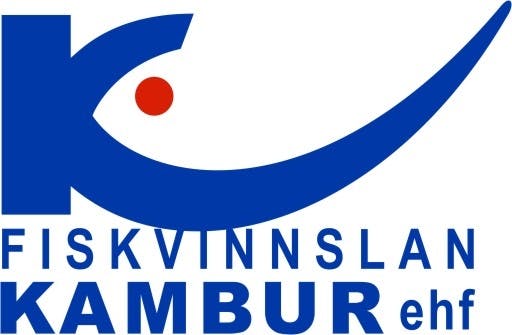
Fiskvinnslan Kambur ehf.
Fiskvinnslan Kambur ehf. operates a fish processing plant in Hafnarfjörður. The company’s subsidiaries are Grunnur ehf. and Stapavík hf.
Operating revenue during the year was EUR 18.3 million. Profit from operations amounted to EUR 0.2 million. Total assets at the end of the year amounted to EUR 26.9 million, while equity was EUR 4.4 million, or 16%.
Brim owns a 100% share in Fiskvinnslan Kambur ehf., and the book value of the holding amounted to EUR 17.6 million.
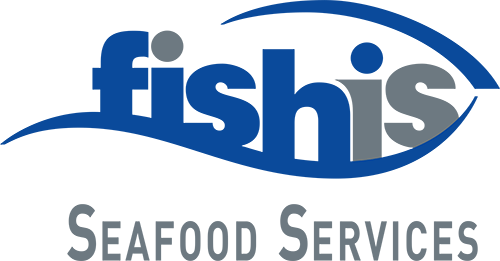
Seafood Services ehf.
Seafood Services ehf. is a service company that specialises in various services to the fishing industry.
Operating revenue during the year was EUR 4.0 million. There was a loss from the operation in the amount of EUR 0.1 million. Total assets at the end of the year amounted to EUR 1.4 million, while equity was EUR 1.1 million, or 75%.
Brim owns a 100% share in Seafood Services ehf., and the book value of the holding amounted to EUR 1.8 million.
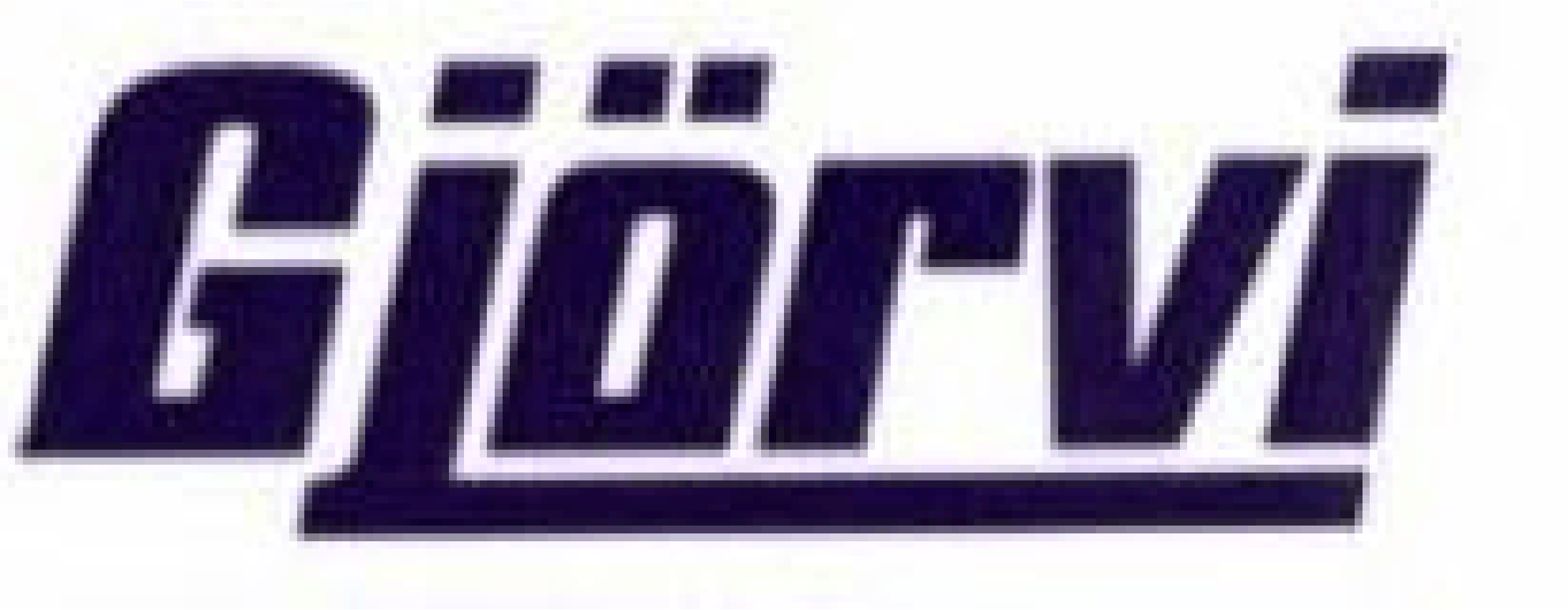
Gjörvi ehf.
Gjörvi ehf. specialises in comprehensive maintenance services for ships and machinery and construction work, as well as related services, for both domestic and foreign parties.
Operating revenue during the year was EUR 1.2 million. Loss from operations amounted to EUR 0.1 million. Total assets at the end of the year amounted to EUR 0.2 million, while equity was a negative EUR 0.4 million.
Brim owns a 100% share in Gjörvi ehf., and the book value of the holding amounted to a negative EUR 0.2 million.
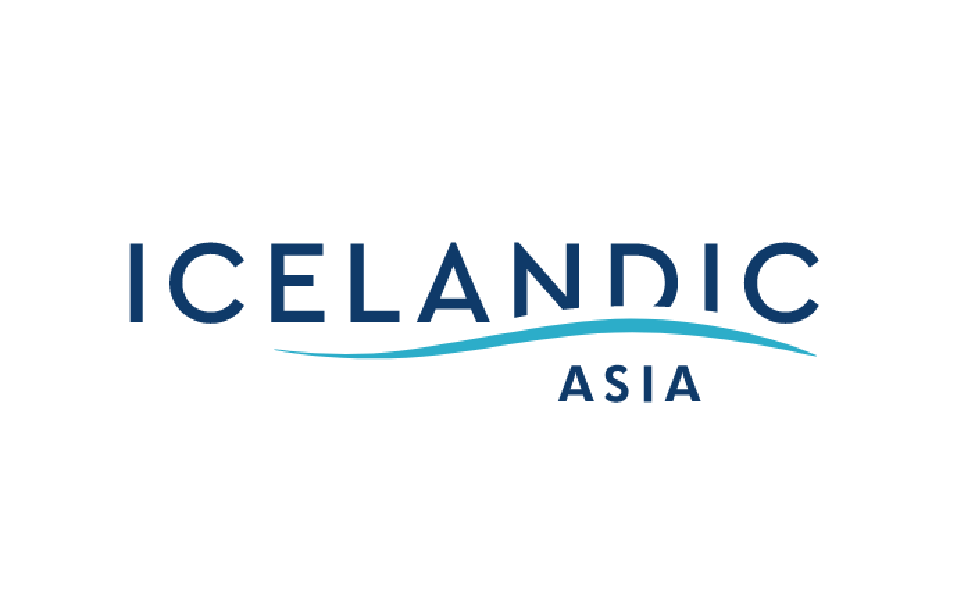
Sales Companies in Asia
Brim owns all shares in three sales companies in Asia: Icelandic Japan KK, Icelandic China Trading Co. Ltd. and Icelandic Hong Kong Ltd.
The companies’ combined operating income during the year amounted to EUR 154.1 million. Profit from operations amounted to EUR 1.3 million. Total assets at the end of the year amounted to EUR 41.2 million, while equity was EUR 16.7 million.
Brim owns a 100% share in the companies, and the book value of the holdings amounted to EUR 32.0 million.
Associated Companies
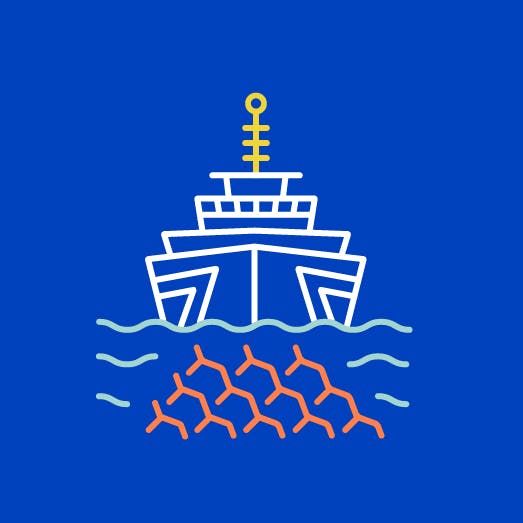
Deris S.A.
Brim owns a 20% share in the holding company Deris S.A. in Chile. Deris owns the fisheries companies Friosur and Pesca Chile. The companies operate two freezer trawlers, two longliners that freeze the catch, three wetfish trawlers and one vessel for krill fishing. In addition, it operates one fish processing plant.
Loss from Deris operations amounted to EUR 1.2 million in 2021. The company’s effect on Brim’s operations was negative by EUR 0.6 million. The book value of Brim’s holding was EUR 24.5 million at the end of 2021.
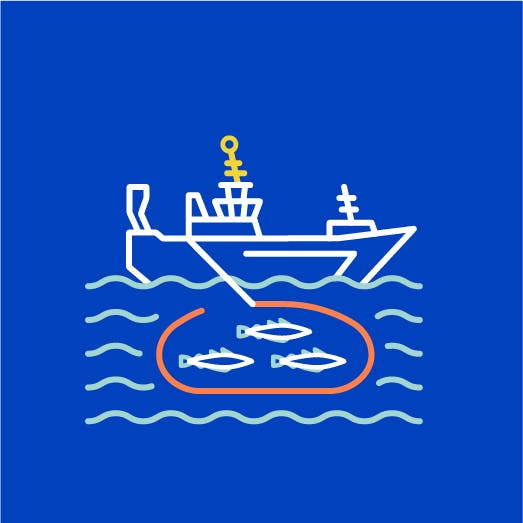
Guðrún Þorkelsdóttir ehf.
Brim owns a 50% share in the fisheries company Guðrún Þorkelsdóttir ehf. The company operates the pelagic vessel Guðrún Þorkelsdóttir SU. The book value of Brim’s holding was €0.002 million.
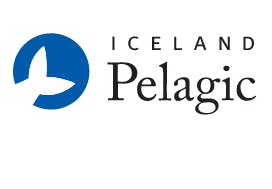
Icelandic Pelagic ehf.
Brim owns a 33% share in Iceland Pelagic ehf. The company specialises in the sale and distribution of frozen seafood products. Other shareholders are Ísfélag Vestmannaeyja hf. and Skinney-Þinganes hf.
The company’s effect on Brim’s operations was positive by €0.07 million. The book value of Brim’s holding was €2.4 million at the end of 2021.
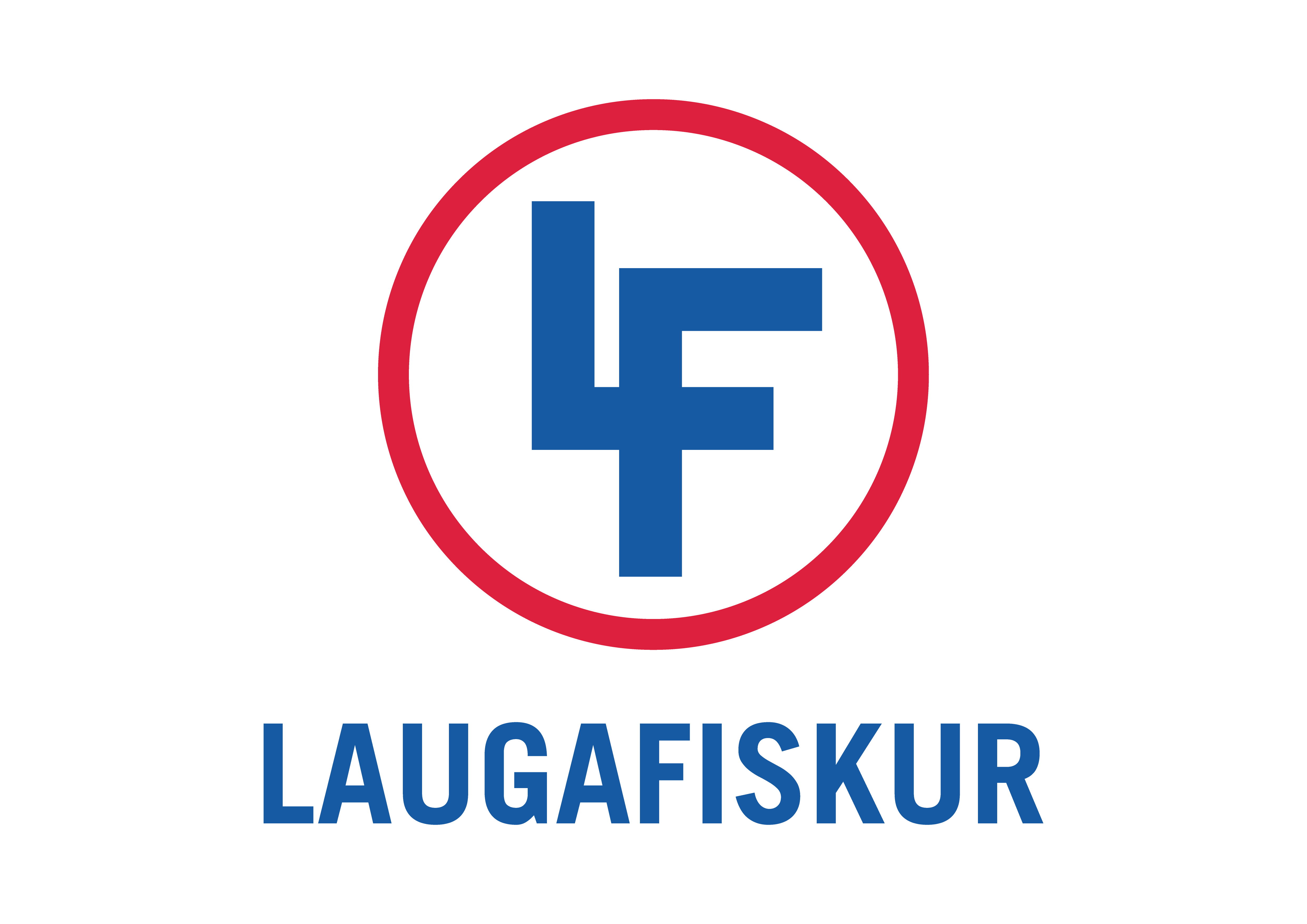
Laugafiskur ehf.
Laugafiskur ehf. operates a fish drying plant in Reykjanes and sells its products to foreign customers. The company built a powerful drying unit in Reykjanes for heads and spines produced for the Nigerian market.
Brim owns a 33.3% share in the company against Skinney Þinganes hf. and Nesfiskur ehf.
The company’s effect on Brim’s operations was positive by EUR 0.6 million. The book value of Brim’s holding was EUR 4.7 million at the end of 2021.
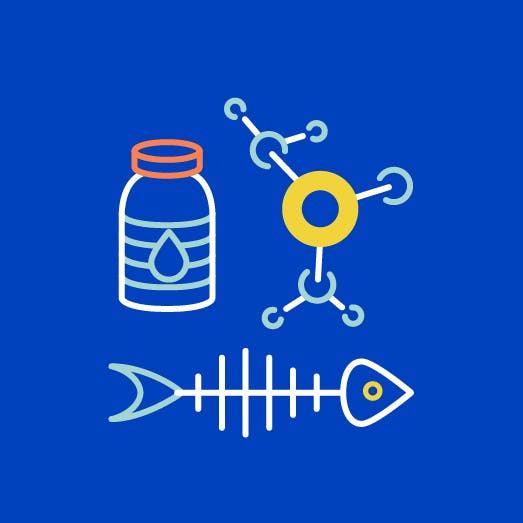
Marine Collagen ehf.
Brim owns a stake in Marine Collagen, which aims to produce gelatin and collagen from 4,000 tonnes of fish skin from Icelandic groundfish per year.
The company’s effect on Brim’s operations was negative by EUR 0.1 million. The book value of Brim’s holding was EUR 0.8 million at the end of 2021. Other shareholders are Samherji hf., Vísir hf. and Þorbjörn hf., with a 25% share in the company each.

Þórsberg ehf.
Brim owns a 41% share in Þórsberg ehf., which is a fisheries company in Tálknafjörður that operates, i.a. the hook-and-line boat Indriði Kristins BA.
The company’s effect on Brim’s operations was positive by EUR 0.7 million. The book value of Brim’s holding was EUR 8.6 million at the end of 2021.

Melnes ehf.
At the end of the year, Brim acquired a 43% share in Melnes ehf., which is a fisheries company in Rif that operates, i.a. the hook-and-line boat Særif SH-25.
The book value of Brim’s holding was EUR 6.6 million at the end of 2021.
Board and Governance
Transactions of Related Parties
Brim’s operations are subject to the rules on transfer pricing, which refer to how related legal entities price transactions between themselves. The rules are intended to ensure that the price determination in transactions between related legal entities is in accordance with prices in comparable transactions between unrelated parties, so that the pricing is in accordance with the so-called arm’s-length rule. The rules only apply when there are certain connections between legal entities that conduct business.
Connection exists when there is a direct and/or indirect connection between the legal entities themselves or when there is a connection between persons who are the majority owners of the legal entities or have administrative control over the legal entities that conduct business. The relationship between the legal entities themselves can be defined directly or indirectly as follows:
- When legal entities are part of the same group, they are unequivocally related legal entities.
- When a legal entity is under the direct and/or indirect majority ownership or administrative control of two or more legal entities within a group, it is considered to be related to all legal entities within the group.
- When a legal entity owns more than 50% in another legal entity indirectly, they are considered related within the meaning of the provision of the Act on Transfer Pricing. If one legal entity is part of a group, the other legal entity is considered to be related to all other legal entities within the group.
Brim sold products to the following related parties in 2021:
- Icelandic Japan, sales of products EUR 19.0 million.
- Vignir G. Jónsson, sales of roe EUR 7.5 million.
- Fiskvinnslan Kambur, sales of groundfish for processing EUR 1.8 million.
- Iceland Pelagic, sales of seafood products EUR 49.9 million.
- Laugarfiskur, sales of heads EUR 1.0 million.
Brim also bought products from related parties in 2021:
- Fiskvinnslan Kambur, purchase of products EUR 1.1 million:
- Gjörvi vessel services, EUR 1.0 million.
- Útgerðarfélag Reykjavíkur, lease of catch quota EUR 1.0 million.
- Seafood Services, EUR 0.2 million.
Brim’s other transactions with related parties are insignificant.
Other transactions between related parties:
- Útgerðarfélag Reykjavíkur and its subsidiary sold Icelandic Japan products for EUR 38.9 million. Brim also sold fishing quotas to Útgerðarfélag Reykjavíkur in the amount of EUR 22.5 million.
- Seafood Services, which handles product quality control, sold services to Icelandic Japan for EUR 0.8 million and to Icelandic China for EUR 1.8 million.
- Fiskvinnslan Kambur sold Laugafiskur heads for EUR 1.1 million.
- Icelandic Japan sold Icelandic China products for EUR 1.3 million.
Other transactions between related parties are insignificant.
Governance statement
| 2021 | 2020 | 2019 | 2018 | 2017 | ||
|---|---|---|---|---|---|---|
G1 Board Diversity | ||||||
Total board seats occupied by women (as compared to men) | % | 40% | 40% | 40% | 40% | 40% |
Committee chairs occupied by women (as compared to men) | % | - | - | - | - | - |
G2. Board Independence | ||||||
Does company prohibit CEO from serving as board chair? | Yes/No | Yes | Yes | Yes | Yes | Yes |
Total board seats occupied by independents | % | 80% | 60% | 80% | 80% | 80% |
G3. Incentivized Pay | ||||||
Are executives formally incentivized to perform on sustainability? | Yes/No | No | No | No | No | No |
G4. Collective Bargaining | ||||||
Total enterprise headcount covered by collective bargaining agreement(s) | % | 97% | 97% | 97% | 97% | 97% |
G5. Supplier Code of Conduct | ||||||
Are your vendors or suppliers required to follow a Code of Conduct? | Yes/No | Yes | Yes | - | - | - |
If yes, what percentage of your suppliers have formally certified their compliance with the code? | % | 28% | 31% | - | - | - |
G6. Ethics & Anti-Corruption | ||||||
Does your company follow an Ethics and/or Anti-Corruption policy? | Yes/No | Yes | Yes | Yes | Yes | Yes |
If yes, what percentage of your workforce has formally certified its compliance with the policy? | % | - | - | - | - | - |
G7. Data Privacy | ||||||
Does your company follow a Data Privacy policy? | Yes/No | Yes | Yes | Yes | Yes | Yes |
Has your company taken steps to comply with GDPR rules? | Yes/No | Yes | Yes | Yes | Yes | Yes |
G8. ESG Reporting | ||||||
Does your company publish a sustainability report? | Yes/No | Yes | Yes | Yes | Yes | Yes |
Is sustainability data included in your regulatory filings? | Yes/No | Yes | Yes | Yes | Yes | Yes |
G9. Disclosure Practices | ||||||
VDoes your company provide sustainability data to sustainability reporting frameworks? | Yes/No | Yes | Yes | Yes | Yes | Yes |
Does your company focus on specific UN Sustainable Development Goals (SDGs)? | Yes/No | Yes | Yes | - | - | - |
Does your company set targets and report progress on the UN SDGs? | Yes/No | - | - | - | - | - |
G10. External Assurance | ||||||
Are your sustainability disclosures assured or validated by a third party? | Yes/No | Yes* | Yes* | - | - | - |
*EFLA has reviewed the presentation and information on environmental components.
Social
Human Resources
There were 762 full-time employee positions (FTEs) at Brim and its subsidiaries in 2021. Employee turnover was 12.6%, which is slightly more than a year ago. The main explanation is that Brim retired and sold one freezer trawler during the year and all the ship’s crew were terminated. Some of the crew got another position with the company. Fishermen’s collective wage agreements do not allow transfers of crews between ships, instead crews must be formally terminated in order to be able to offer them a position on the company’s other ships. The crews usually make up about a third of the company’s employees and are integrated in such a way that employee turnover can be somewhat higher than is usual with companies on land.
Gender ratios have also changed between years. In 2021, 75% of employees were men, which is a 4% increase from the previous year. Almost all of Brim’s fishermen are men, and that mostly explains the difference. Brim has worked to equalise the gender ratio within the company. When jobs are advertised, all genders are encouraged to apply, but despite this, the company has not been able to reduce the gender gap in the company’s jobs. However, the company will not be deterred and will continue to encourage all genders to apply for jobs with the company.
Social
Education
At Brim, emphasis has long been placed on educational matters, and staff are regularly invited to attend courses concerning, e.g. safety and quality issues, strengthening personal skills and technical knowledge.
The first half of the year was used to assess educational needs among staff and plan the education in winter 2021–2022. Despite COVID-19, it was possible to offer various courses, in addition to which web programs such as Eloomi were used to disseminate content to staff.
The number of education hours in 2021 was 806.5, and the number of staff who attended education courses was 339.
A large part of Brim’s employees are of foreign origin and have a different mother tongue than Icelandic. In 2021, a status assessment in Icelandic was offered to employees in Norðurgarður, which was accepted by 120 employees, and subsequently, 60 people took courses in Icelandic. The aim is to offer Icelandic language instruction to all the company’s foreign employees at all its operating units.
Every year, fishermen attend a course at the Maritime Safety and Survival Training Centre which focuses on employees adding to their knowledge in the use of the rescue and safety equipment available on vessels. The manner in which to respond to various accidents and mishaps, prevent them and ensure personal safety are also covered. The ability to respond correctly during emergencies is very important.
Number of educational hours
| Employees | Hours | |||
|---|---|---|---|---|
Course | 2021 | 2020 | 2021 | 2020 |
Maritime Safety and Survival Training Centre | 51 | 45 | 378 | 680 |
Safety Measures | 29 | 11 | 2 | |
Fish Processing | 16 | 40 | ||
New Recruit Course | 35 | 6 | ||
Icelandic | 47 | 32 | ||
Quality Systems | 11 | 113 | 234 | 25 |
Technology | 18 | 92 | 121 | 34 |
Other training - personal skills etc. | 148 | 170 | 25 | 19 |
Total | 339 | 436 | 807 | 800 |
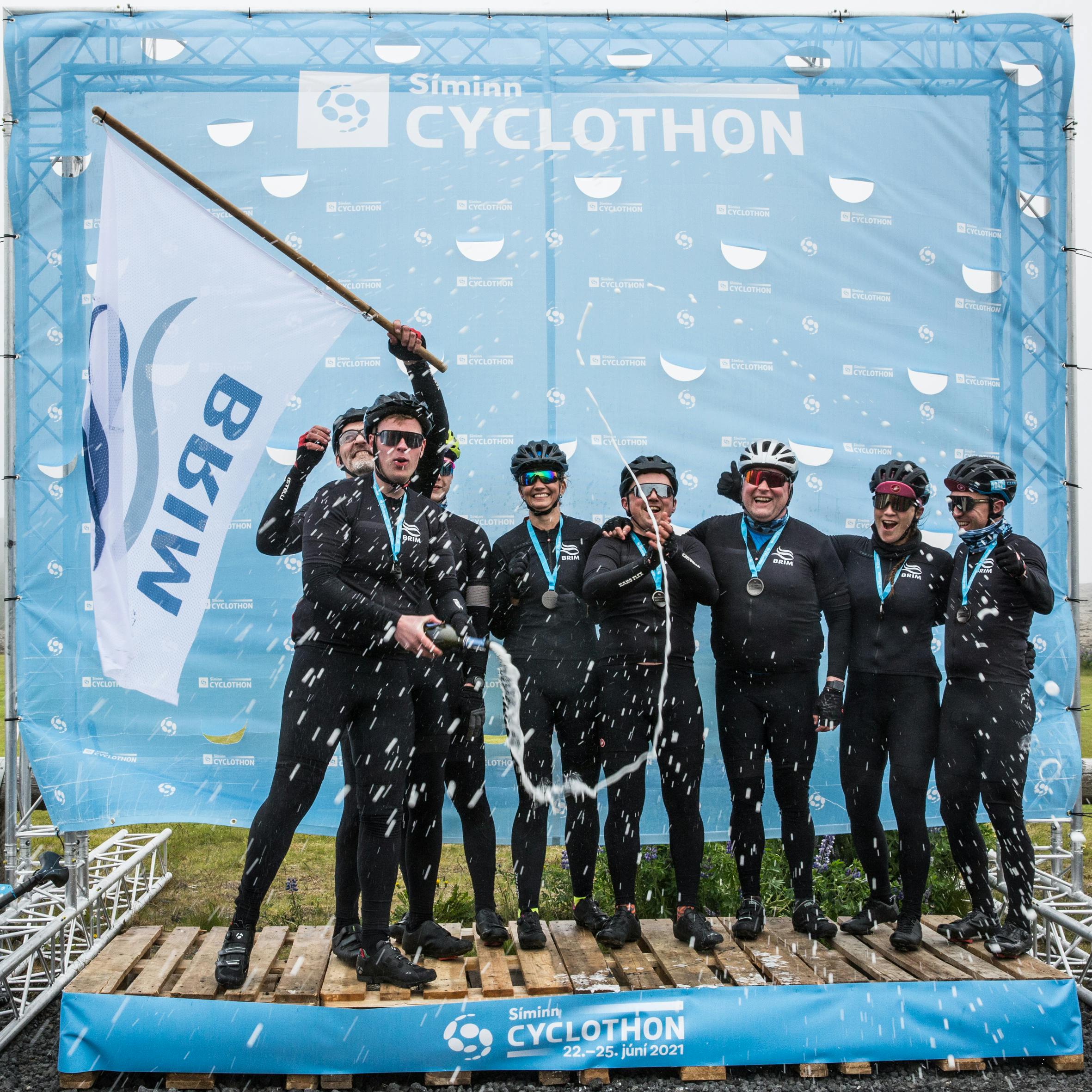
Health and a Healthy Lifestyle
Brim encourages employees to lead a healthy lifestyle and take care of the environment in various ways. Employees who can take advantage of environmentally friendly means of transport are offered a transport grant or an annual bus pass. Sports grants are provided to those who exercise regularly, and all staff are encouraged to take part in national campaigns such as the Life Race (Lífshlaupið) and Cycling to Work (Hjólað í vinnuna). Healthy food is offered at a reasonable price at the company’s operating units. In addition, doctors and nurses are present every other week at the Norðurgarður office, and all staff are offered an annual health check, counselling and flu shots. All of this is well utilised by the company’s staff, and for example, at the end of 2021, there were 144 transport agreements in force with staff.
Brim had a team in the Síminn Cyclothon in the summer of 2021. The team cycled around Iceland in 44 hours, 25 minutes and 42 seconds.
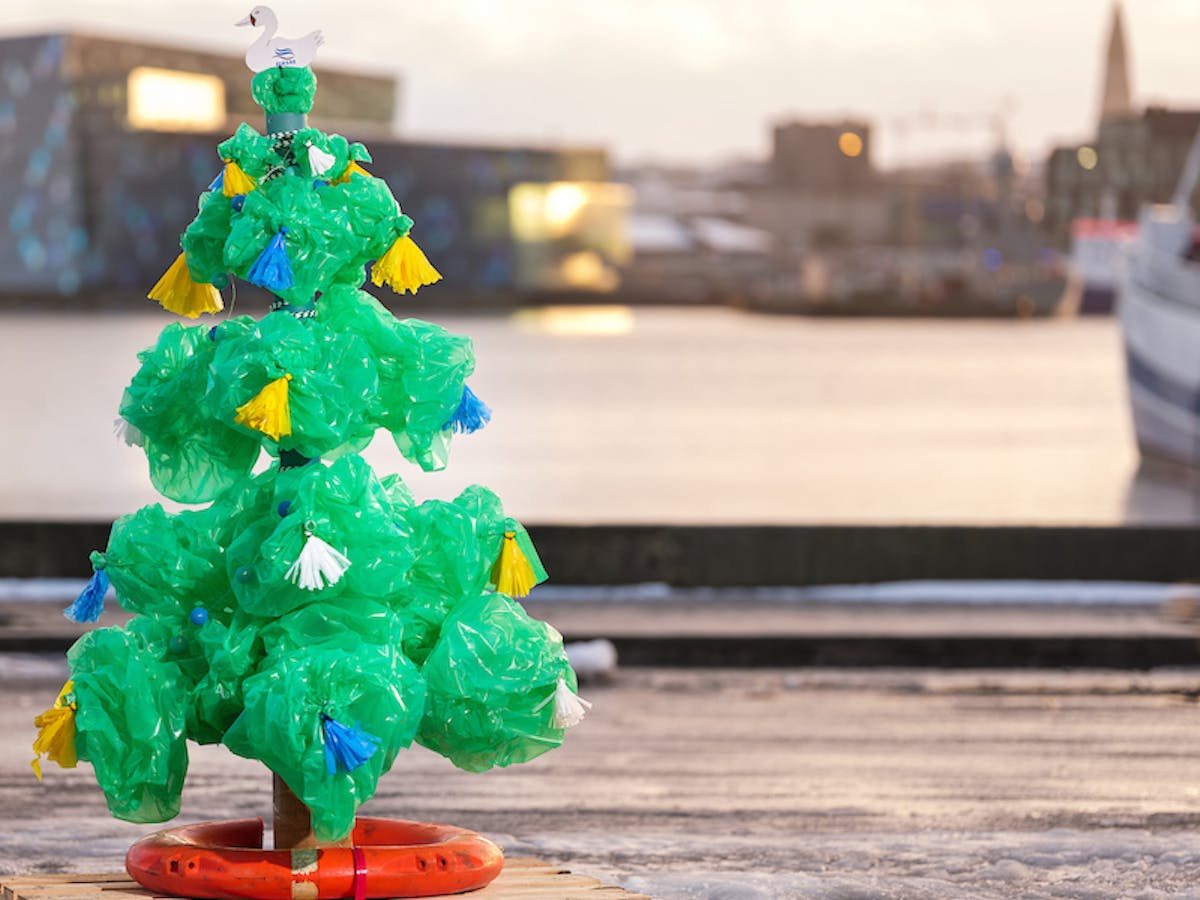
Staff Social Activities
It has proved difficult to maintain vigorous social activities over the last two years due to COVID-19. In the second half of 2021, the social life picked up a little, both due to the changed infection prevention rules and the resourcefulness of the staff, which made it possible to hold several events.
- Every weekend in August, Brim’s staff and their families were offered the opportunity to visit the Reykjavík Park and Zoo.
- The Human Resources Department drew attention to Eloomi, the company’s educational program with “Quiz Up”, which was very well received.
- For many years, Brim has invited staff to Christmas concerts and this year Baggalútur’s concert at Háskólabíó was chosen.
- At the beginning of December, a Christmas decoration competition was held between operating units, which ignited people’s competitive streak, and the ambition was enormous. The staff of Svanurinn, which is Brim’s recycling centre at Norðurgarður, made a Christmas tree from materials that were generated on site and, of course, won the competition’s recycling prize.
Social
Safety Issues
Brim is extensively involved in accident prevention, as can be seen in both its internal work, i.e. education and prevention, and by the fact that the company supports robust accident prevention and rescue efforts both on land and sea. The organisation of safety issues is intended to increase the importance of the subject within the company and strengthen the efficiency of safety measures. Management is responsible for safety issues.
Each and every employee is responsible for their own safety. One of the basic prerequisites of reducing the number of accidents is that everyone takes responsibility and that management, as well as employees, are determined to involve themselves in improving safety. The management is responsible for ensuring that all equipment is of the best quality and that the safety arrangements of the work areas and units for which they are responsible are up to date. The company relies on management to lead by good example and that they lead the occupational health and safety work of the company.
Safety Days are held annually, where Safety Committees and safety representatives meet to review safety issues, accident prevention and to review the accidents that occurred that year with the aim of improving safety awareness and knowledge. In the autumn of 2021, the Safety Day took place in a teleconferencing format.
Brim’s occupational health and safety policy can be found on the company’s website.
Social
Safety Committees and Representatives
Safety Committees are operated in all company departments and have clear and defined mandates. The company’s human resources department is responsible for the management and supervision of these issues. This is in accordance with Regulation No. 920/2006 on the organisation and implementation of health and safety in workplaces.
It is extremely important that employees comply with the safety rules in the workplace, participate in safety education and submit suggestions as to where improvements could be made.
A total of four Safety Committees are operated in the company. Safety Officer is a term that covers both safety guards that are nominated by the manager of the operating unit in question and the safety stewards that are elected by employees. The role of Safety Officers is to ensure that occupational health and safety are in accordance with applicable laws* and the policies of the company.
*Act on Working Environment, Health and Safety in Workplaces No. 46/1980. Regulation No. 200/2007 on measures to encourage improvements in the safety and health of workers on vessels.
Social
Accidents
Brim places importance on all accidents being recorded, and the procedures and work processes are presented to employees. All accidents and incidents must be recorded electronically on Brim’s intraweb. All absence and care accidents of employees on land are notified to the Administration of Occupational Safety and Health (Vinnueftirlit ríkisins), the Icelandic Health Insurance (Sjúkratrygginga Íslands) and the insurance company. Absence accidents of workers at sea are notified to the Icelandic Health Insurance, the Icelandic Marine Accident Investigation Board (Rannsóknarnefnd sjóslysa) and the insurance company.
Accidents are categorised as follows:
- Lost-time accidents are accidents that cause absences from work (work-related accidents), i.e. the day of the accident + the next day or longer.
- Care accidents are accidents where the injured party needs to seek assistance in a healthcare facility but comes back to work the next day.
- First-aid accidents are minor accidents or accidents that require the use of first aid equipment (shallow cuts, etc.). The injured party does not take time off work.
- Leisure-time accidents are accidents that occur during the leisure time of employees or on the way to and from work.
A total of 35 accidents were reported during the year, which is 15 fewer than the year before, when there were 50. A total of 17 accidents at sea and 18 accidents on land were reported during the year. The decrease between years can be attributed, e.g. to the fact that equipment was renewed in the company’s processing plant in Norðurgarður. In addition to which, regular reminders to employees about safety and care result in a safer workplace.
Social statement
| Units | 2021 | 2020 | 2019 | 2018 | 2017 | |
|---|---|---|---|---|---|---|
S1. CEO Pay Ratio | ||||||
CEO total compensation to median FTE total compensation | X:1 | 5.1 | 3.1 | 4.5 | 5.3 | 5.2 |
Does your company report this metric in regulatory filings? | Yes/No | No | No | No | No | No |
S2. Gender Pay Ratio | ||||||
Median male compensation to median female compensation | X:1 | 1.9 | 2.6 | 1.9 | 2.0 | 2.1 |
The Result of Equal Pay Certification | % | 5.50% | 4.9% | 2.3% | - | - |
S3. Employee Turnover | ||||||
Year-over-year change for full-time employees | % | 12.6% | 9.5% | 3.0% | 8.0% | 2.0% |
Number of FTE's | 762 | 770 | 798 | 773 | 839 | |
S4. Gender Diversity | ||||||
Men | % | 75% | 71% | 72% | 70% | - |
Female | % | 25% | 29% | 28% | 30% | - |
S5. Temporary Worker Ratio | ||||||
Total enterprise headcount held by part-time employees | - | - | - | - | - | |
Total enterprise headcount held by contractors and/or consultants | - | - | - | - | - | |
S6. Non-Discrimination | ||||||
Does your company follow a sexual harassment and/or non-discrimination policy? | Yes/No | Yes | Yes | Yes | Yes | Yes |
S7. Injury Rate | ||||||
Total number of accidents | Number | 35 | 50 | 60 | 90 | 59 |
- Of which at sea | Number | 17 | 23 | 23 | 26 | 17 |
- Of which on land | Number | 18 | 27 | 37 | 65 | 42 |
Rate of accident-related incidents, as a ratio of the total number of employees | % | 9.0% | 8.0% | 12.0% | 7.0% | |
S8. Global Health & Safety | ||||||
Does your company follow an occupational health and/or global health & safety policy? | Yes/No | Yes | Yes | Yes | Yes | Yes |
S9. Child & Forced Labor | ||||||
Does your company follow a child and/or forced labor policy? | Yes/No | Yes | Yes | Yes | Yes | Yes |
If yes, does your child and/or forced labor policy See also: cover suppliers and vendors? | Yes/No | Yes | Yes | Yes | Yes | Yes |
Fishing and Processing
Fishing, processing and product sales were generally successful during the year. Although successful in minimising COVID-19’s direct impact on operations, the pandemic had a significant impact, which was reflected in a sharp rise in transportation costs and the price of consumables such as oil, packaging and other resources. In addition, the cost of sick pay increased significantly. The cost of a variety of measures taken, such as zoning and COVID-19 rapid antigen tests, was also significant.
During the year, there were changes to the fleet when the pelagic vessel Svanur RE was purchased by Brim, with the aim of strengthening the company’s pelagic fishing, and Höfrungur III AK was sold.
At the end of the year, the following vessels were in operation at Brim and the subsidiaries Ögurvík, Kambur and Guðrún Þorkelsdóttir.
Further information on the company’s fleet can be found on the company’s website.
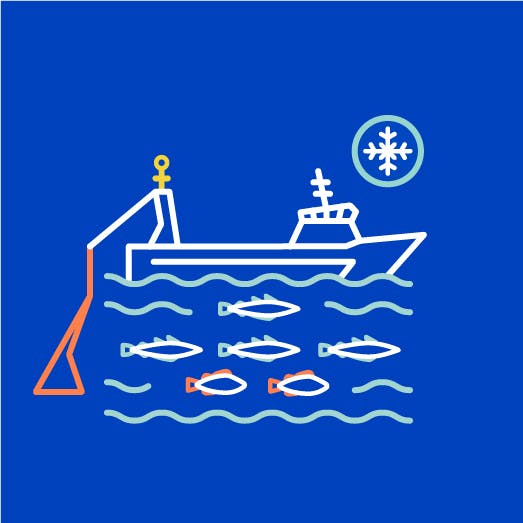
Freezer Trawlers
- Vigri RE
- Örfirisey RE
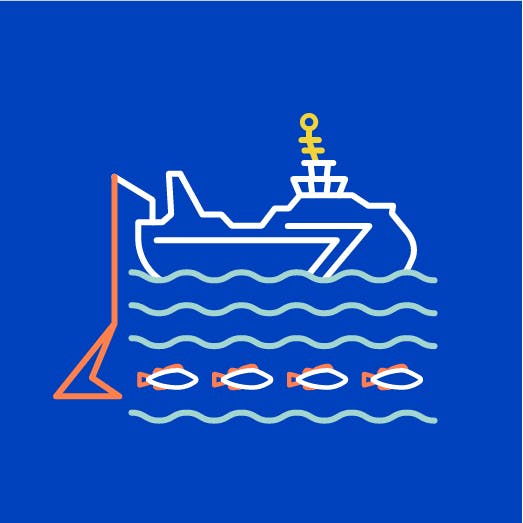
Wetfish Trawlers
- Akurey AK
- Helga María AK
- Viðey RE

Pelagic Vessels
- Venus NS
- Víkingur AK
- Svanur RE
- Guðrún Þorkelsdóttir SU

Liner
- Kristján HF
Fishing and Processing
Groundfish Division
Vessel Operation
There was a significant cut to Brim’s groundfish rights in the quota year 2021/2022, or about 13% for cod, 17% for redfish and 36% for deep-sea redfish. The total amount reduced between quota years was equivalent to 70–75% of the annual catch of one freezer trawler.
Despite the COVID-19 pandemic, the trawlers’ fishing was successful and there were no ship delays due to the pandemic in 2021. Extensive measures were taken to prevent COVID-19 infection on the trawlers, and these measures were successful with the concerted efforts of all.
The total catch of trawlers in 2021 was 49,671 tonnes and was 45,326 tonnes in 2020. Landings per fishing day were 30.5 tonnes and were 27.7 tonnes in 2020.
In May 2020, Kristján HF will be added to the Group’s fleet. Kristján HF caught 1,729 tonnes during the year based on gutted catch, of which 1,100 tonnes occurred since May. In comparison, landings were 1,643 tonnes for the whole of 2020.
Land Processing
Catch for processing in Norðurgarður was 22,262 tonnes of cod, saithe and redfish, compared to 14,692 tonnes the year before. This difference in volume between years is explained by the fact that there was a three-month processing stop in 2020 due to the renewal of processing equipment. Investment in refurbished processing lines has yielded good results and is reflected in increased product value as well as man-hour performance.
Fiskvinnslan Kambur ehf., which is also part of the company’s Group, processed 4,925 tonnes of cod and haddock in 2021.
Catch and value of groundfish trawlers
| 2021 | 2020 | |||
|---|---|---|---|---|
Catch (tonnes) | Value (thousands of euros) | Catch (tonnes) | Value (thousands of euros) | |
Wetfish trawlers | 26,198 | 41,221 | 19,179 | 29,710 |
Akurey | 7,810 | 12,354 | 6,065 | 9,524 |
Viðey | 8,963 | 14,143 | 6,740 | 10,555 |
Helga María | 7,696 | 11,237 | 5,264 | 7,778 |
Kristján* | 1,729 | 3,487 | 1,110 | 1,853 |
Freezer trawler | 25,202 | 60,255 | 27,258 | 64,802 |
Örfirisey | 9,385 | 23,476 | 8,778 | 21,339 |
Vigri | 9,706 | 23,508 | 9,459 | 22,554 |
Höfrungur III** | 6,111 | 13,271 | 9,021 | 20,909 |
Total | 51,400 | 101,476 | 46,437 | 4,512 |
*Kristján HF, from May to December 2020
**Höfrungur III, from January to August 2021
Groundfish catch for processing (tonnes)
| 2021 | 2020 | |||||
|---|---|---|---|---|---|---|
Norðurgarður | Kambur | Total | Norðurgarður | Kambur* | Total | |
Cod | 11,623 | 3,883 | 15,506 | 7,640 | 3,573 | 11,213 |
Saithe | 5,274 | 5,274 | 2,690 | 2,690 | ||
Redfish | 5,365 | 5,365 | 4,362 | 4,362 | ||
Haddock | 1,042 | 1,042 | 201 | 201 | ||
22,262 | 4,925 | 27,187 | 14,692 | 3,774 | 18,466 |
*Kambur from May to December, 2020
Fishing and Processing
Pelagic Division
Vessel Operation
The total catch of pelagic vessels was 14 thousand tonnes higher in 2021 than in 2020, or 96 thousand tonnes, compared to 82 thousand tonnes the year before. The main change between years was that vessels returned to capelin fishing which, together with increased herring fishing, offset reduced blue whiting and mackerel fishing.
The pelagic vessel Guðrún Þorkelsdóttir, in which Brim has a 50% share, took care of occasional fishing trips for the company when the other vessels were busy with other projects.
Capelin fishing began in February and lasted until mid-March. As the quota was very limited, considerable emphasis was placed on utilising every single capelin for human consumption, which was successful. Blue whiting fishing took over in April and May, with the exception of two fishing trips at the beginning of the year. Mackerel fishing began in late June and ended abruptly in early September. Norwegian-Icelandic and Icelandic herring were then caught from mid-September until the end of November. In December, capelin fishing from the quota of the capelin season 2021/2022 began, and it went well, with about 17 thousand tonnes landed for smelting before the end of the year.
The COVID-19 pandemic had little effect on the vessel operations in 2021. The ships’ crews adapted to changed circumstances and limited crew changes as much as possible during the seasons.
Land Processing
In Akranes, roe processing lasted for two weeks and went well.
The company’s processing in Vopnafjörður was successful during the year, and project status was good throughout the year. Between seasons, lumpfish and saithe were processed, and during the summer, halibut was processed in parallel with the mackerel season.
The mackerel season started at the end of June and went well, although there were frequent processing stops at the beginning of the season. Product prices were good, and sales exceeded expectations. Processing of Norwegian-Icelandic herring began in September and lasted until November. Herring prices rose between years, and the market has recovered well. Fishing from the Icelandic herring stock took over as a direct continuation of the Norwegian-Icelandic fishing and lasted until November. The Icelandic herring stock shows great signs of recovery, there are indications of good renewal in the stock and there is little evidence of infection in the catch that comes ashore. All herring from the Icelandic herring stock was processed for human consumption this season, and sales of products were successful.
At the end of the year, about 17 thousand tonnes were landed for smelting in Vopnafjörður from the capelin quotas for the 2021/2022 season.
Catch and value of Pelagic Vessels
| 2021 | 2020 | |||
|---|---|---|---|---|
Catch (tonnes) | Value (thousands of euros) | Catch (tonnes) | Value (thousands of euros) | |
Venus | 45,783 | 15,140 | 42,001 | 10,541 |
Víkingur | 43,222 | 14,836 | 39,581 | 10,198 |
Svanur | 6,585 | 1,878 | ||
Total | 95,590 | 31,854 | 81,582 | 20,739 |
Frozen Pelagic Products (tonnes)
| 2021 | 2020 | |||||
|---|---|---|---|---|---|---|
Akranes | Vopnafjörður | Total | Akranes | Vopnafjörður | Total | |
Frozen capelin | 3,227 | 3,227 | 0 | |||
Capelin roe | 389 | 1,005 | 1,394 | 0 | ||
Herring | 11,461 | 11,461 | 6,165 | 6,165 | ||
Mackerel | 8,172 | 8,172 | 11,075 | 11,075 | ||
389 | 23,865 | 24,254 | 0 | 17,240 | 17,240 |
Catch Received in Fishmeal Plants (tonnes)
| 2021 | 2020 | |||||
|---|---|---|---|---|---|---|
Akranes | Vopnafjörður | Total | Akranes | Vopnafjörður | Total | |
Capelin | 6,397 | 19,564 | 25,961 | |||
Herring | 13,555 | 13,555 | 9,956 | 9,956 | ||
Mackerel | 8,782 | 8,782 | 10,166 | 10,166 | ||
Blue Whiting | 32,213 | 32,213 | 52,035 | 52,035 | ||
Other | 3,169 | 69 | 3,238 | 2,815 | 29 | 2,844 |
Total | 9,566 | 74,183 | 83,749 | 2,815 | 72,185 | 75,000 |
Quality
Quality and Traceability
All the operating units on land and at sea are subject to the official monitoring of the Icelandic Food and Veterinary Authority (Matvælastofnun, MAST), which makes sure that laws and regulations are complied with. MAST’s monitoring operations are based on inspections, which in some cases are carried out without any notice.
The company’s operations in the production plants in Reykjavík and Vopnafjörður are certified in accordance with the IFS standard (International Featured Standard). This is an internationally recognised standard and one of the most used in the field of food safety, along with ISO and BRC. These main standards of food safety are co-ordinated under the banner of the Global Food Safety Initiative (GFSI). The IFS certification in Vopnafjörður has lapsed in the last two years, as the COVID-19 pandemic has prevented an audit by foreign regulators.
The fish processing plant Kambur in Hafnarfjörður and the freezer trawlers do not have IFS certification.
The fishmeal plants in Akranes and Vopnafjörður are certified according to the FEMAS standard (Feed Materials Assurance Scheme). FEMAS is an international feed safety standard for products produced for animal feed.
| Operation Unit | Certification |
|---|---|
Norðurgarður - fish processing plant | IFS foods |
Vopnafjörður – fish processing plant* | IFS foods |
Vopnafjörður - fish meal processing plant | FEMAS |
Akranes - fish meal processing plant | FEMAS |
Akranes - pelagic freezing plant** |
* The processing plant in Vopnafjörður could not be audited last year due to the COVID-19 pandemic.
** The pelagic freezing plant in Akranes has a production of capelin roe that goes on for a short period, and it is therefore difficult to get an evaluator to see the production.
There were no recalls during the year 2021, neither due to labelling nor for other reasons. During the period covered by the report, there were no documented deviations from the company’s rules as regard the provision of information and labelling of the products of the company.
Brim has established a product quality policy which can be accessed here: Brim’s Quality Policy.
Traceability
Brim’s fishing operations rely solely on wild stock, and the company’s products consist, in all cases, of pure and naturally healthy marine produce. The traceability of products is an important part of food production. The food and feed safety system of Brim is based on being able to trace the product from its origins all the way to the customer. Detailed information on catches are recorded, such as fishing areas, fishing gear, the composition of the catch, volumes, etc. The origin of the raw material in processing is recorded and information on the origin of the product is provided to the buyer. In addition, all information on the end destination of all products is maintained. Thus, all products are traceable from fishing to the buyer. This traceability is tested on a regular basis by the company’s internal controls as well as by external audits of the systems of the company, including in audits relating to certifications of origin.
The products of the company are in all cases labelled in accordance with rules on the labelling of marine products. This means that it is always clear what species of fish and fishing area is involved, as well as what type of fishing gear was used.
Marketing
Marketing
Sales companies owned by Brim are mostly responsible for the sale of the company’s products, but in addition to them, Brim employs three sales managers. Icelandic Japan, Icelandic China and Icelandic Hong Kong, which are owned by Brim, handle sales of the company’s products in Asia. Iceland Pelagic, in which Brim owns 33%, handles sales and distribution to the Eastern European market, which mostly frozen pelagic product. Brim’s sales managers sell all products fresh and frozen in Western Europe and the US. Sales of fishmeal and fish oil products are entirely handled by Brim’s staff.
The main impact of the COVID-19 pandemic was on the transport prices of pelagic products, especially in the Asian market. Asia’s competitiveness with markets in Eastern Europe was therefore limited, thus not a lot of mackerel products went to Asia this year. Sales of pelagic products were successful during the year, and prices generally rose. The sale of pelagic products was carried out in close collaboration with the sales company Icelandic Japan and the sales company Iceland Pelagic.
There was great demand for sea-frozen cod, haddock and saithe throughout 2021, and prices are constantly rising. Sales of redfish were slower, but stocks declined steadily as sales exceeded catches, but prices have not been rising well. Transport costs in the remote markets have risen more than in the nearby markets.
Land-frozen products continued to sell well after adapting to changing market conditions from 2020, as demand grew from the retail market against declining demand in the HORECA (Hotel – Restaurant – Catering) market. Prices have risen, and demand has increased.
The negative effects of the COVID-19 pandemic were still felt in fresh fish markets in the first half of the year, as travel was still minimal, canteens closed in many places and restaurant operations minimal. Demand picked up in the middle of the year, along with increased vaccinations and the freedom of citizens in the main markets, and price developments were favourable for the main products. Transportation has generally been successful for fresh produce, but the cost of transport has generally risen.
Sales of pelagic products were successful during the year, and prices generally rose. Herring prices rose between years, the market has recovered well and the sale of products has been successful. The main impact of the pandemic was on the transport prices, especially in the Asian market. Asia’s competitiveness with markets in Eastern Europe was therefore limited, thus not a lot of mackerel products went to Asia this year.
Brim did not participate in international fisheries or sales exhibitions in 2021 due to COVID-19.
Innovation
Brim Participated in Innovation Week 2021
Brim participated in Innovation Week, which is an annual event, and drew attention to innovation in safety issues. It was discussed how technology has changed the safety and occupational health of fishermen and fish processors.
In connection with the Innovation Week, Brim produced three videos about innovations in the company’s fish processing at Norðurgarður; accidents and how innovation, vigilance and collaboration have reduced serious accidents at sea; and about a pilot project that Brim and the North Iceland Health Institute have run for telemedicine. That project has been successful, but there is uncertainty about the continuation of that project, as the staffing of healthcare professionals in the country is not guaranteed.
Innovation
Brim and Síminn Pay Are Developing Electronic Request Cards to Increase Security in Account Transactions
Brim, in collaboration with Síminn Pay, has designed a system of electronic requests that is intended to increase security, overview and traceability in account transactions.
In recent years, Brim, in collaboration with various technology companies, has developed a variety of electronic solutions, and this is part of the company’s innovation and development work.
The purpose of electronic requests is to transfer the company’s account transactions to “electronic request cards” on employees’ phones, where electronic IDs ensure the security of the transactions.
The request card is independent of systems, can be connected to telephone numbers from any electronic communications company, aims for simpler management of the company’s audits and will:
- Increase overview and facilitate management control of audits instead of paper requests, shopping cards and credit lists in stores that have been used for corporate purchasing.
- Contribute to a great increase in security in the audit process, as smart programs and electronic IDs will take care of the identification of employees in the payment process.
- Ensure the audit process will be fully traceable, as there will be no doubt as to who took out the product in the company’s name.
Brim envisages that in the future, those responsible for purchasing at companies and institutions will manage the authorisations of their representatives with an electronic request system via the telephone numbers of employees.
Innovation
A New type of Pallet Film that Is Intended to Reduce the Use of Plastic and Save Money
Brim, along with Silfraberg, which is an ambitious domestic supplier and also an agent for the product in question, has been conducting experimental tests with a new type of pallet film which aims to reduce the use of plastic in operations and thus reduce the company’s carbon footprint.
The foreign producer of the film has in recent years developed solutions for companies with the aim of reducing the use of disposable plastic and thereby reducing waste in packaging use. An announcement from the manufacturer states that it is a leader in this market, and the BioZ pallet film in question is completely degradeable in the environment.
Innovation
Staff Order Fuel for Vessels with a New Mobile App
In the first half of the year, the company began to develop an app for the company’s ship inspectors that enables them to order fuel for ships from mobile phones. This was one of the projects that is part of the company’s innovation and development work.
With this fuel app, the staff responsible for ordering oil for ships can carry out the order wherever they are at any given time. The employees of the relevant oil company receive a notification on their mobile phone and confirm receipt, which is then displayed on the customer’s phone.
Concurrently, carbon footprint (CO2) in the amount of fuel that was delivered directly to the environmental base is recorded in real time.